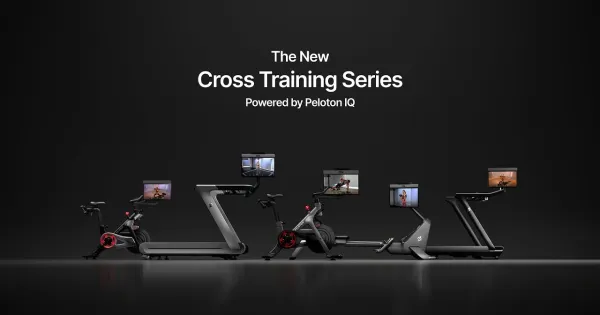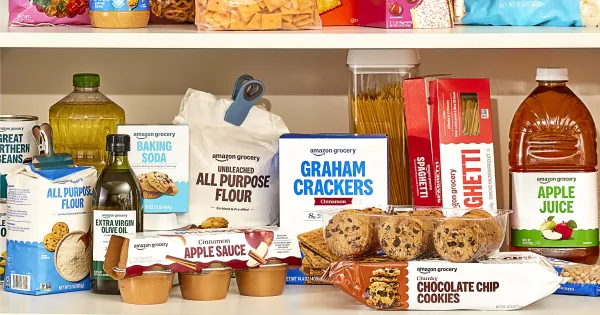3 Proven Ways to Build Brand Awareness

Brand awareness is the foundation of any successful business, representing how well consumers recognize a brand and its products. It builds trust, loyalty, and market presence. Brand awareness significantly influences consumer perception and purchasing decisions. When aware of a brand, consumers are more likely to choose it over competitors, even at higher prices, due to familiarity and emotional connection.
We will review 3 proven strategies to build brand awareness: content marketing, social media impact, and influencer partnerships. These methods, adaptable to businesses of all sizes, can work together to amplify your brand's market presence, reaching a wider audience and creating lasting impressions.
Way 1) Harness the Power of Content Marketing

Content marketing is one of the most effective ways to build brand awareness. It involves creating and distributing valuable, relevant, and consistent content to attract and engage a clearly defined audience. Unlike traditional advertising, which is often intrusive and ignored by consumers, content marketing provides value upfront, earning the attention and trust of potential customers.
Establishing Authority Through High-Quality Content
One of the key benefits of content marketing is its ability to establish your brand as an authority in your industry. By consistently publishing high-quality content that addresses the pain points, questions, and needs of your target audience, you position your brand as a trusted source of information. This not only builds brand awareness but also credibility.
- Blogging: Regularly publishing blog posts on your website is a great way to share your expertise and keep your audience informed. Blog posts can cover a wide range of topics, from industry trends and how-to guides to case studies and thought leadership pieces. The more value you provide, the more likely your audience is to return to your site and share your content with others.
- E-books and Whitepapers: Offering in-depth resources like e-books and whitepapers can further establish your brand as an expert. These longer-form content pieces allow you to dive deeper into topics and provide your audience with actionable insights and solutions.
- Webinars and Podcasts: Hosting webinars and podcasts provides a platform for your brand to engage with your audience in real time. These formats are particularly effective for complex topics that require more explanation or for creating a sense of community among your audience.
Optimizing Content for Search Engines (SEO)
Content marketing and search engine optimization (SEO) go hand in hand. SEO is the practice of optimizing your content so that it ranks higher in search engine results pages (SERPs), making it easier for potential customers to find you. By incorporating relevant keywords, optimizing meta tags, and ensuring your content is mobile-friendly, you can increase your visibility on search engines like Google.
- Keyword Research: Understanding the keywords and phrases your target audience is searching for is the first step in effective SEO. Tools like Google Keyword Planner, Ahrefs, or SEMrush can help you identify high-traffic keywords related to your industry.
- On-Page Optimization: This involves optimizing individual web pages to rank higher in SERPs. It includes placing keywords in strategic locations such as titles, headings, and meta descriptions, as well as ensuring your content is well-structured and easy to read.
- Link Building: Gaining backlinks from reputable websites can significantly boost your SEO efforts. When other sites link to your content, it signals to search engines that your content is valuable and trustworthy, which can improve your rankings.
Distributing Content Across Multiple Channels
Creating great content is just the first step. To maximize brand awareness, you need to distribute that content across multiple channels to reach a wider audience.
- Social Media Platforms: Share your content on social media platforms like Facebook, Twitter, LinkedIn, and Instagram. Tailor your content for each platform to ensure it resonates with the specific audience that frequents each channel.
- Email Marketing: Use email marketing to distribute your content directly to your subscribers. Email newsletters can be a powerful way to keep your audience informed and engaged with your brand.
- Content Syndication: Consider syndicating your content on third-party websites or platforms that have a larger or different audience base. This can help you reach new audiences that may not be familiar with your brand.
Way 2) Leverage Social Media to Amplify Your Brand

Social media has revolutionized the way brands communicate with their audience. It’s an essential tool for building brand awareness, as it allows businesses to reach a large audience quickly and interact with them in real-time. Social media platforms offer unique opportunities to humanize your brand, engage with your audience, and create a community of loyal followers.
Choosing the Right Social Media Platforms
Not all social media platforms are created equal. It’s important to identify which platforms are most popular with your target audience and focus your efforts there.
- Facebook: With over 2.8 billion monthly active users, Facebook is a versatile platform suitable for businesses of all sizes. It’s particularly effective for B2C companies looking to engage with consumers through a mix of content, including posts, videos, and live streams.
- Instagram: Instagram is a visual platform ideal for brands with strong visual content. It’s popular among younger audiences and is particularly effective for industries like fashion, beauty, and lifestyle.
- LinkedIn: LinkedIn is the go-to platform for B2B marketing. It’s a professional network where you can share industry insights, company updates, and connect with other professionals in your field.
- Twitter: Twitter is a fast-paced platform ideal for real-time updates, news, and customer service. It’s a great platform for engaging with your audience through conversations and trending topics.
Creating Engaging Content for Social Media
To build brand awareness on social media, you need to create content that resonates with your audience and encourages them to engage with your brand.
- Visual Content: Images, videos, and infographics are highly engaging and often perform better than text-only posts on social media. Use visual content to showcase your products, share behind-the-scenes glimpses of your company, or tell your brand’s story.
- User-Generated Content: Encourage your audience to create content related to your brand, such as photos or videos of them using your products. User-generated content not only provides social proof but also helps build a sense of community around your brand.
- Interactive Content: Polls, quizzes, and live Q&A sessions are great ways to engage your audience. Interactive content invites participation and can increase your visibility on social media platforms.
- Consistency: Posting consistently is key to maintaining brand awareness on social media. Create a content calendar to plan and schedule your posts in advance, ensuring that you maintain a steady presence online.
Utilizing Paid Advertising on Social Media
While organic reach on social media is valuable, paid advertising can significantly boost your brand awareness efforts by targeting specific demographics and reaching a larger audience.
- Facebook and Instagram Ads: These platforms offer advanced targeting options, allowing you to reach users based on their location, age, interests, and behavior. You can also retarget users who have previously interacted with your brand, increasing the likelihood of conversion.
- LinkedIn Ads: LinkedIn’s advertising platform is particularly effective for B2B companies. You can target users based on their job title, industry, company size, and more, ensuring your ads reach decision-makers in your target market.
- Twitter Ads: Twitter’s advertising platform allows you to promote tweets, accounts, or trends. It’s ideal for businesses looking to increase their visibility during major events or product launches.
- Influencer Partnerships: Collaborating with influencers on social media can amplify your brand’s reach. Influencers have dedicated followings, and their endorsement of your brand can introduce your products to a broader audience.
Way 3) Build Brand Awareness Through Influencer Partnerships

Influencer marketing has become a powerful tool for building brand awareness. By partnering with influencers, businesses can leverage the influencer’s credibility and reach to connect with a larger audience. This strategy is particularly effective because consumers tend to trust recommendations from individuals they admire or follow more than traditional advertising.
Identifying the Right Influencers for Your Brand
Choosing the right influencers to partner with is crucial to the success of your influencer marketing campaign. The key is to find influencers whose audience aligns with your target market and who share your brand’s values.
- Micro-Influencers: Micro-influencers have smaller followings, typically between 1,000 to 100,000 followers, but they often have higher engagement rates. Partnering with micro-influencers can be cost-effective and allows for more authentic interactions with their audience.
- Macro-Influencers: Macro-influencers have larger followings, ranging from 100,000 to 1 million followers. They are ideal for brands looking to reach a broader audience quickly. However, partnerships with macro-influencers can be more expensive.
- Celebrity Influencers: Celebrities have millions of followers and can provide massive exposure for your brand. However, this option is usually the most costly and may not always result in the most authentic engagement.
- Industry Experts: Collaborating with industry experts or thought leaders can be particularly effective for B2B brands. These individuals have built a reputation for their knowledge and expertise, and their endorsement can significantly enhance your brand’s credibility.
Creating Effective Influencer Campaigns
Once you’ve identified the right influencers, the next step is to create a campaign that aligns with your brand’s goals and resonates with the influencer’s audience.
- Sponsored Posts: Sponsored posts are one of the most common forms of influencer marketing. The influencer creates content that promotes your brand, often in the form of a photo, video, or story, and shares it with their followers.
- Product Reviews: Sending influencers your products to review is another effective way to build brand awareness. Honest and detailed reviews can help build trust with the influencer’s audience and encourage them to try your product.
- Giveaways: Partnering with influencers for giveaways can generate excitement around your brand and increase your social media following. Giveaways often require participants to follow your brand, like the post, and tag friends, which can significantly increase your reach.
- Takeovers: Allowing an influencer to take over your social media accounts for a day can create a unique and engaging experience for your audience. The influencer can share their experiences with your brand, provide behind-the-scenes content, or host a Q&A session.
Measuring the Success of Influencer Partnerships
To ensure your influencer marketing efforts are paying off, it’s important to track the success of your campaigns. Key metrics to monitor include:
- Engagement Rate: The engagement rate measures how much the influencer’s audience interacts with the content. This includes likes, comments, shares, and saves. A high engagement rate indicates that the content resonated with the audience.
- Reach and Impressions: Reach refers to the number of unique users who saw the content, while impressions refer to the total number of times the content was viewed. These metrics help you understand the overall visibility of your campaign.
- Conversion Rate: If the goal of your campaign was to drive sales or sign-ups, tracking the conversion rate is essential. This metric shows the percentage of users who took the desired action after interacting with the content.
- ROI: Finally, calculating the return on investment (ROI) will help you determine whether the campaign was worth the investment. This can be done by comparing the cost of the campaign to the revenue generated or other measurable outcomes.
Final Thoughts
Building brand awareness is essential for a successful marketing strategy. To stand out and gain customer loyalty, businesses can use content marketing, social media engagement, and influencer partnerships. These tools can significantly boost a brand's visibility when used effectively. By delivering valuable content, engaging with audiences on social platforms, and leveraging influencers' reach, companies can create a strong brand presence that resonates with their target audience.
Building brand awareness is an ongoing process that requires effort, creativity, and adaptability. The goal is to create a lasting impression, leading to increased loyalty, customer retention, and business growth. By staying in tune to audience needs and the digital world, brands can remain relevant. Whether starting out or strengthening an existing presence, these strategies provide a solid foundation for long-term success.
Key Takeaways
| Key Area | Takeaways |
|---|---|
| 1. Content Marketing | -Build authority with valuable content (blogs, e-books, webinars). -Use SEO to improve visibility. -Share content across multiple platforms. |
| 2. Social Media Engagement | -Choose the right platforms for your audience. -Create engaging content (visuals, user-generated, interactive). -Boost reach with paid ads. |
| 3. Influencer Partnerships | -Partner with influencers that align with your brand. -Run effective campaigns (sponsored posts, reviews, giveaways). -Track success (engagement, reach, conversions). |
| Final Thoughts | -Brand awareness requires ongoing effort and creativity. -Successful efforts lead to loyalty, retention, and growth. |





